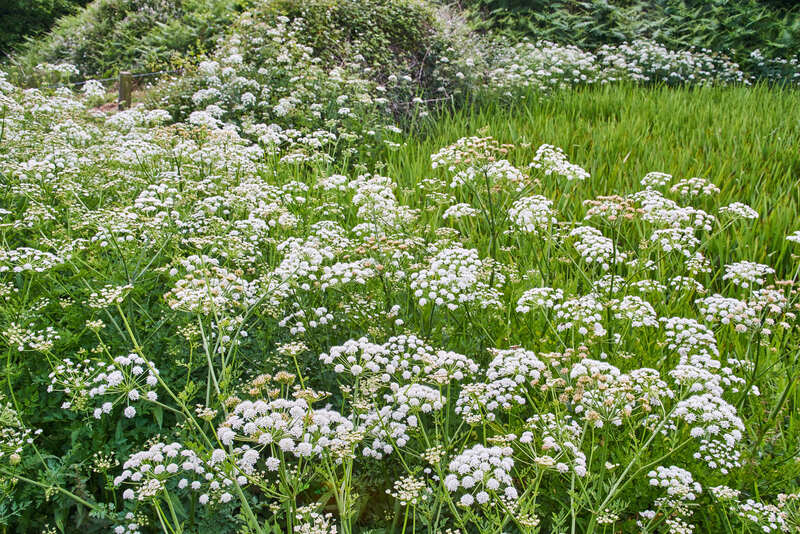Gardener's Guide to Windproofing Your Oasis
Posted on 30/06/2025
Gardener's Guide to Windproofing Your Oasis
Transforming a garden into a tranquil oasis takes significant effort, creativity, and dedication. But even the most carefully crafted gardens can be vulnerable to one of nature's most persistent forces: wind. Whether you live in an exposed suburban plot or a breezy coastal area, wind can stress plants, erode soil, and damage fragile features.
This comprehensive guide provides you with actionable strategies and ideas for windproofing your garden oasis. Learn how to harness the wind's energy to your advantage, protect your green sanctuary, and ensure your hard work flourishes--even when breezes turn blustery.
Understanding the Impact of Wind on Gardens
How Wind Affects Your Garden Oasis
Wind can be both a friend and foe to gardens. On one hand, it provides fresh air, helps with plant pollination, and reduces fungal diseases. On the other hand, strong gusts can break stems, snap branches, desiccate delicate foliage, and even uproot newly planted shrubs.
- Physical damage: High winds can topple tall plants and cause structural harm.
- Increased evaporation: Wind speeds up water loss from soil and leaves, causing drought stress.
- Soil erosion: Persistent wind can strip away nutrient-rich topsoil, affecting plant health.
- Sowing issues: Seeds and young plants are particularly at risk from wind exposure.
The Importance of Windproofing Your Oasis
A truly peaceful garden oasis is one where plants grow in harmony, free from environmental stress. Windproofing not only ensures your landscape looks its best, but also conserves water, reduces maintenance, and supports local biodiversity. Proper windbreaks can also create warm, sheltered microclimates that allow for a wider variety of plantings.

Planning for Windproofing: Steps to Protect Your Garden
1. Assess Your Site Conditions
The first step in windproofing your oasis is to assess the prevailing wind direction, speed, and exposure. Walk your garden and ask:
- Where does the wind usually come from?
- Are there existing natural barriers (fences, trees, buildings)?
- Which areas of your garden are most at risk for wind damage?
Tip: You can use ribbon tied to stakes or weather apps to track wind patterns over several days.
2. Design with Wind in Mind
The layout and structure of your garden can dramatically affect its wind resilience. Consider these wind-proofing design principles:
- Staggered Planting: Layer tall shrubs, medium bushes, and ground cover to slow wind before it reaches sensitive plants.
- Deflect, Don't Block: Solid barriers often create turbulence and can make wind damage worse. Opt for permeable windbreaks that filter wind instead of stopping it completely.
- Strategic Plant Placement: Place fragile or container plants in more protected microclimates, such as near fences or walls.
3. Choose the Right Wind-Resistant Plants
Some plants naturally withstand blustery conditions better. For windproofing your green space, select varieties that are:
- Woody and flexible (to bend instead of break)
- Low-growing or bushy
- Deep-rooted and drought-tolerant
- Native species known for resilience in your region
Popular wind-resistant plants include: Escallonia, hawthorn, elaeagnus, Viburnum tinus, New Zealand flax, sea buckthorn, and native grasses.
Windbreaks: The Backbone of a Windproof Garden
A windbreak is a barrier that reduces wind speed and protects your garden oasis. Depending on your space and style, windbreaks can be temporary or permanent, living or artificial.
Living Windbreaks
- Hedges or Shrubs: Layered, dense plantings like privet, hornbeam, or laurel create organic, beautiful wind barriers.
- Trees: Well-chosen trees such as pine, spruce, or holly act as both wind-buffer and wildlife habitat.
- Climbing Plants: Vines on a trellis (honeysuckle, wisteria) give vertical green coverage and break wind.
Living windbreaks improve over time and enhance privacy, biodiversity, and aesthetics.
Man-made Wind Barriers
- Fencing: Slatted fences, woven willow, or louvered screens are effective while allowing some airflow. *Solid* fences are less ideal as they cause wind eddies.
- Walls and Structures: Brick or stone walls double as wind shields and support climbing plants. Raised beds can also create micro-windbreaks for tender crops.
- Garden Fabrics: Shade cloth or hessian burlap stretched across supports offers a quick, removable windbreak for new plantings or vegetable patches.
How Tall and How Dense?
For effective windproofing, your barrier should be approximately 1.5 to 2 meters (5-7 feet) tall. Planting your windbreak at about 50-60% density--meaning filtered rather than solid--reduces wind speed over a longer distance and minimizes turbulence.
Placement tip: Position your windbreak at a distance of about five times its height from the area you wish to protect to create an optimal shelter zone.
Practical Windproofing Strategies for Gardeners
1. Mulching and Soil Protection
Wind can rapidly dry out and erode bare soil. Use mulch (wood chips, straw, leaf litter, or gravel) to anchor soil and conserve moisture. Heavy mulch prevents soil particles from being blown away and keeps roots cool and moist.
2. Supports, Stakes, and Ties
Tall or newly planted trees, top-heavy dahlias, and climbing vegetables all need support in a wind-exposed garden. Invest in sturdy canes, bamboo stakes, and flexible ties to give your plants extra stability.
- Stake at an Angle: Point stakes into the prevailing wind for the most support.
- Use Soft Ties: Prevent stem damage by using soft, expandable ties instead of rigid wire.
- Check Regularly: Inspect during storms to adjust as necessary.
3. Sheltering Fragile Plants
For precious or frost-sensitive specimens, create mini wind shields using cloches, cold frames, or portable garden screens. Group potted plants together behind larger features or in protected corners.
4. Raised Beds and Berms
Raised beds oriented perpendicular to the wind can provide shelter and improve drainage. Berms (low, mounded earth banks) act as windbreaks and define planting zones, especially in open gardens or urban areas.
5. Garden Layout and Zoning
Organize your garden into zones of exposure. Place most delicate species in the most sheltered zones, with tougher, wind-tolerant varieties on the outside acting as sacrificial buffers.
Enhancing Garden Design with Windproof Features
Decorative Elements That Double as Shelter
Windproofing your oasis doesn't have to mean sacrificing style. Creative garden features can blend protection with beauty:
- Living walls: Vertical gardens sewn with ferns, succulents, or herbs provide extra shelter and color.
- Arbors and pergolas: Overhead structures reduce wind impact and create leafy retreats for sitting areas.
- Garden art and large pots: Strategically placed sculptures and containers can break up wind and anchor fragile plants.
Water Features and Wind
Ponds, fountains, and birdbaths should be located in relatively sheltered parts of your garden. Strong wind can increase evaporation, lower water levels, and scatter debris. Landscaping earth or planting around these features acts as a natural wind barrier.
Outdoor Living and Entertaining Spaces
If you love to entertain, shelter is essential for comfort. Use trellising, screens, and dense shrubs to surround seating areas. Consider retractable windbreaks or roll-down screens for maximum flexibility in changing weather.
Windproofing Your Vegetable Garden
The kitchen garden is particularly vulnerable to wind exposure. Young seedlings, leafy greens, and fruiting crops often struggle in blustery conditions. Employ these strategies:
- Use tall windbreaks: Espaliered fruit trees, sunflowers, or bamboo screens can encircle your vegetable patch.
- Grow under cover: Cold frames, polytunnels, and shade netting offer extra protection for sensitive crops.
- Heavier watering and mulching: Counteract dry winds with regular irrigation and organic mulch to lock in moisture.
- Choose hardy crops: Kale, chard, peas, broad beans, and root vegetables tend to withstand wind better than tomatoes or peppers.
Maintenance: Sustaining Your Windproofed Oasis
Routine Inspection
Each season brings fresh weather challenges. Regularly inspect all physical barriers, plant supports, and living windbreaks for signs of wear, damage, or gaps.
Pruning and Upkeep
Prune windbreak plants at least once per year to maintain density and health. Remove dead branches, thin out overgrown areas, and refresh mulches as needed.
Layering and Succession Planting
If a windbreak fails or disappears, fill gaps quickly with fast-growing annuals or temporary screens. Succession planting ensures continuous protection.
Benefits Beyond Wind Protection
Windproofing your garden oasis provides side benefits that enhance overall landscape health and beauty:
- Improved comfort: Enjoy your outdoor space even in breezy weather.
- Microclimate creation: Extended growing seasons and a wider choice of plants become possible.
- Biodiversity boost: Shelter attracts beneficial insects, birds, and pollinators.
- Water conservation: Reduced evaporation lowers your watering bills.
- Increased property value: A resilient, attractive garden can add value to your home.
Advanced Techniques for Wind-Exposed Gardens
Innovative Materials and Technology
- Transparent windbreak panels: Acrylic or polycarbonate screens maintain views while reducing wind speed.
- Retractable awnings & roll-down screens: Flexible, practical solutions for patios or decks exposed to sudden gusts.
- Smart irrigation: Sensors and timers ensure plants get the water they need even in dry, windy conditions.
Eco-Friendly Windproofing Approaches
Prioritize sustainability:
- Use native, drought-resistant species for living windbreaks.
- Repurpose materials (old doors, pallets, woven willow) as creative wind screens.
- Compost organic matter to reinforce soil health against erosion.

Conclusion: Your Tranquil, Windproof Oasis Awaits
Wind is a natural part of the garden ecosystem, but with smart windproofing strategies, you can turn the challenge into an asset. By combining thoughtful design, robust windbreaks, resilient plant choices, and sustainable gardening practices, you'll create a garden oasis that remains sheltered, inviting, and beautiful--no matter how the wind blows.
Now is the time to assess, plan, and implement wind protection for your garden. Start small, experiment with different windbreaks, and you'll soon enjoy a thriving outdoor oasis that is as peaceful as it is productive. Every garden can be wind-resilient--with a little care, creativity, and attention to the shifting breeze.
Further Reading: Windproofing Resources & FAQs
-
What's the best quick windbreak for new gardens?
Try fast-growing shrubs (like privet or elder), woven willow fencing, or hessian screens for immediate shelter. -
Are there "windproof" flowers?
Yes! Hardy geraniums, daylilies, lavender, asters, and alliums all thrive in gusty spots. -
How do I combine wind protection with privacy?
Choose dense, evergreen, or climbing plants for living screens; layer plantings for privacy and wind shelter in one.
For more tips and ideas, check local gardening groups, visit botanical gardens, or consult with a landscape designer experienced in wind-resistant garden solutions.
May your oasis grow serene and sheltered, no matter the weather!

